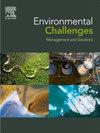城市绿地中外来入侵传粉媒介竞争的系统综述
Q2 Environmental Science
引用次数: 0
摘要
城市化和气候变化共同破坏了城市植被,改变了物候周期,增加了对病虫害的脆弱性,并造成栖息地破碎。这些变化减少了基本的生态系统服务,如温度调节、空气净化和洪水缓解,并导致更广泛的生物多样性下降。传粉者依赖于持续的花卉资源,在城市环境中尤其脆弱。入侵传粉媒介通过剥削行为(如垄断花蜜和花粉)和干扰行为(如侵略性排斥)加剧了资源稀缺,从而降低了本地分类群的觅食机会和繁殖成功率。本文综述了近年来有关城市生态系统中原生传粉媒介与入侵传粉媒介竞争机制的研究。我们评估了城市政策工具(如综合病虫害管理协议、本地植物指令和传粉媒介友好型区划)如何塑造植被组成和传粉媒介组合。有证据表明,根除入侵植物,然后建立多样化的本地植物,可在两年内显著提高本地传粉媒介的丰富度。此外,根据本地蜜蜂的生活史特征量身定制的筑巢基础设施选择性地增加了本地蜜蜂的招募,同时阻止了外来的洞巢。最后,我们强调自适应管理框架,将实时监测技术(如计算机视觉系统)和利益相关者参与整合在一起,以在日益增加的环境压力下维持有弹性的授粉网络。通过将生态学理论与实际政策建议相结合,本文为平衡城市发展与保护本地传粉昆虫群落提供了一个战略框架。本文章由计算机程序翻译,如有差异,请以英文原文为准。
A systematic review of native–invasive pollinator competition in urban green space
Urbanization and climate change jointly disrupt urban vegetation by altering phenological cycles, increasing vulnerability to pests and diseases, and causing habitat fregmantation. These changes reduce essential ecosystem services—such as temperature regulation, air purification, and flood mitigation—and contribute to broader biodiversity decline. Pollinators, which rely on continuous floral resources, are especially vulnerable in urban environments. Invasive pollinator species intensify resource scarcity through exploitative behaviors (e.g., monopolizing nectar and pollen) and interference actions (e.g., aggressive exclusion), thereby reducing foraging opportunities and reproductive success among native taxa. This review synthesizes recent studies that elucidate the mechanisms underlying competition between native and invasive pollinators in urban ecosystems. We evaluate how urban policy instruments— such as integrated pest management protocols, native plant mandates, and pollinator-friendly zoning—shape vegetation composition and pollinator assemblages. Evidence shows that eradicating invasive flora, followed by the establishment of diverse native plantings, significantly elevates native pollinator richness within two years. Moreover, nesting infrastructures tailored to the life‐history traits of indigenous bees selectively enhances native recruitment while deterring exotic cavity‐nesters. Finally, we emphasize adaptive management frameworks that integrate real-time monitoring technologies (e.g., computer vision systems) and stakeholder engagement to sustain resilient pollination networks amid increasing environmental pressures. By bridging ecological theory with practical policy recommendations, this review offers a strategic framework for balancing urban development with the conservation of native pollinator communities.
求助全文
通过发布文献求助,成功后即可免费获取论文全文。
去求助
来源期刊

Environmental Challenges
Environmental Science-Environmental Engineering
CiteScore
8.00
自引率
0.00%
发文量
249
审稿时长
8 weeks
 求助内容:
求助内容: 应助结果提醒方式:
应助结果提醒方式:


